|
CYMRU LAND OF SAINTS AND HEROES Tan Wee Cheng's journey through the history & culture of Wales |
|
CYMRU LAND OF SAINTS AND HEROES Tan Wee Cheng's journey through the history & culture of Wales |
Of Spirits and Castles:
Northern Snowdonia
We spent the night in the university town of Bangor, while driving round the region. One point of note about the B&B we stayed in Bangor. I was in my room with Andrew, one of my trav el companions, when he was asked he joined the girls in the other room. I spent the night not knowing the reason. It was only as we departed from Bangor that I was told of the girls' strange, creepy feeling about the place -there was something supernatural that troubled them in their room. Oh no, they actually left me alone in my room. Thank goodness nothing happened to me!
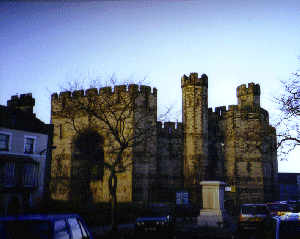 "that most
magnificent badge of our subjection."
"that most
magnificent badge of our subjection."
Thomas Pennant, of Caernarfon Castle
"700 years ago they built these castles to keep us down and now they pay one pound a head to look inside them."
J.B. Griffith, Major of Caernarfon
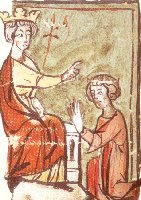 More castles
for the day...we started with Caernarfon -built in 1283 by Edward
I (Right pix: Manuscript despicting the proclaimation of the
Prince of Wales by Edward I), the warrior king of England to
impose English rule on the recently-crushed Gwynedd Welsh. This
was the mightiest of the English castles in Wales -its imposing
walls were the castle-builder's textbook-standard of those days.
Guarding the approaches to the Menai Straits separating Isle of
Anglesey and Great Britain, the castle was also significant for
another reason. This was where Edward I first declared the heir
of the British throne the Prince of Wales -after the slaying of
the Welsh princes and the mutilation of their remains. It was for
the same reason that in 1969 Prince Charles was ceremoniously
invested as the Prince of Wales -an event that drove the Welsh
nationalists crazy and some tried to blow up his train, killing
themselves in the process.
More castles
for the day...we started with Caernarfon -built in 1283 by Edward
I (Right pix: Manuscript despicting the proclaimation of the
Prince of Wales by Edward I), the warrior king of England to
impose English rule on the recently-crushed Gwynedd Welsh. This
was the mightiest of the English castles in Wales -its imposing
walls were the castle-builder's textbook-standard of those days.
Guarding the approaches to the Menai Straits separating Isle of
Anglesey and Great Britain, the castle was also significant for
another reason. This was where Edward I first declared the heir
of the British throne the Prince of Wales -after the slaying of
the Welsh princes and the mutilation of their remains. It was for
the same reason that in 1969 Prince Charles was ceremoniously
invested as the Prince of Wales -an event that drove the Welsh
nationalists crazy and some tried to blow up his train, killing
themselves in the process.
This is a magnificent structure - not merely a grand monument, but a great place to learn about Welsh history. We spent some time in the museum within, as well as exploring its towers and corridors. And of course, lots of photos as well -the towers of Caernarfon are the world's most memorable sights of Wales.
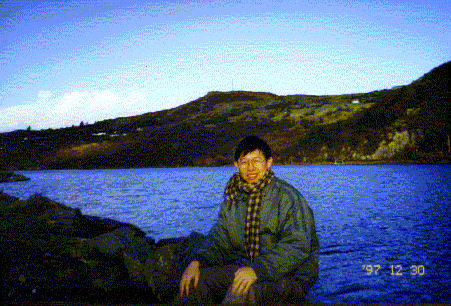 From Caernarfon, we drove inland,
back to the rugged mountains of Snowdonia. The lake of Llanberis
was our destination. This beautiful lake-side village, despite
the winter wetness, was beautiful and mysterious, particularly
with the foggy mountain backdr op, the numerous water-ducks and
seagulls (remember - the sea was nearby), and that romantic
ruined Dolbadarn Castle - built by the Llywelyns - at the far end
of the lake.
From Caernarfon, we drove inland,
back to the rugged mountains of Snowdonia. The lake of Llanberis
was our destination. This beautiful lake-side village, despite
the winter wetness, was beautiful and mysterious, particularly
with the foggy mountain backdr op, the numerous water-ducks and
seagulls (remember - the sea was nearby), and that romantic
ruined Dolbadarn Castle - built by the Llywelyns - at the far end
of the lake.
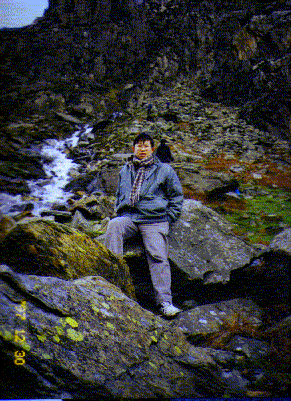 We headed towards Betws-y-Coed,
passing the dramatic snow-capped Snowdon. Like many other
driving-tourists along this winding road, the breathtaking sight
of the plains from a panoramic spot has encouraged to stop by,
despite the obvious traffic risks involved. Camera clicks amidst
the crystal-clear sounds of gushing mountain streams a s well as
an occasional expression of irritation by the many sheep
wandering in the area.
We headed towards Betws-y-Coed,
passing the dramatic snow-capped Snowdon. Like many other
driving-tourists along this winding road, the breathtaking sight
of the plains from a panoramic spot has encouraged to stop by,
despite the obvious traffic risks involved. Camera clicks amidst
the crystal-clear sounds of gushing mountain streams a s well as
an occasional expression of irritation by the many sheep
wandering in the area.
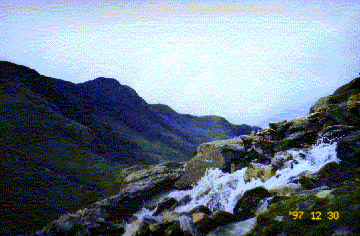 Betws-y-Coed is a little mountain
resort, with the usual B&Bs and numerous cute little shops.
Not far from here is the village of Ty Mawr. Born here in 1545
was Bishop William Morgan, who translated the Bible into the
Welsh language. If not for him, the Welsh language would have
gone the way of the ancient Cornish and Cumbrian languages - lost
among its people and condemned to the miserable existence as a
mere academic oddity, spoken only among students of extinct
languages. We didn't stay for long and proceeded to Conwy, where
we passed by the massive Conwy Castle -another of Edward I's
architectural jewels - and the city walls.
Betws-y-Coed is a little mountain
resort, with the usual B&Bs and numerous cute little shops.
Not far from here is the village of Ty Mawr. Born here in 1545
was Bishop William Morgan, who translated the Bible into the
Welsh language. If not for him, the Welsh language would have
gone the way of the ancient Cornish and Cumbrian languages - lost
among its people and condemned to the miserable existence as a
mere academic oddity, spoken only among students of extinct
languages. We didn't stay for long and proceeded to Conwy, where
we passed by the massive Conwy Castle -another of Edward I's
architectural jewels - and the city walls.
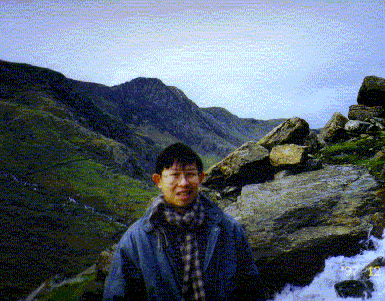 Travelling along A548, we sped
across the northern plains of Wales, bypassing the towns of Rhyl,
and Flint, and then returned to the realms of England. After 5
days, we rushed through Wales from south to north, ahead of our
original schedule (not that it was the most desirable way of
seeing a country). It was New Year's Eve and we decided to make a
mad dash for the Hagmanay celebrations in Edinburgh, Scotland.
That, however, is another story.
Travelling along A548, we sped
across the northern plains of Wales, bypassing the towns of Rhyl,
and Flint, and then returned to the realms of England. After 5
days, we rushed through Wales from south to north, ahead of our
original schedule (not that it was the most desirable way of
seeing a country). It was New Year's Eve and we decided to make a
mad dash for the Hagmanay celebrations in Edinburgh, Scotland.
That, however, is another story.
THE END